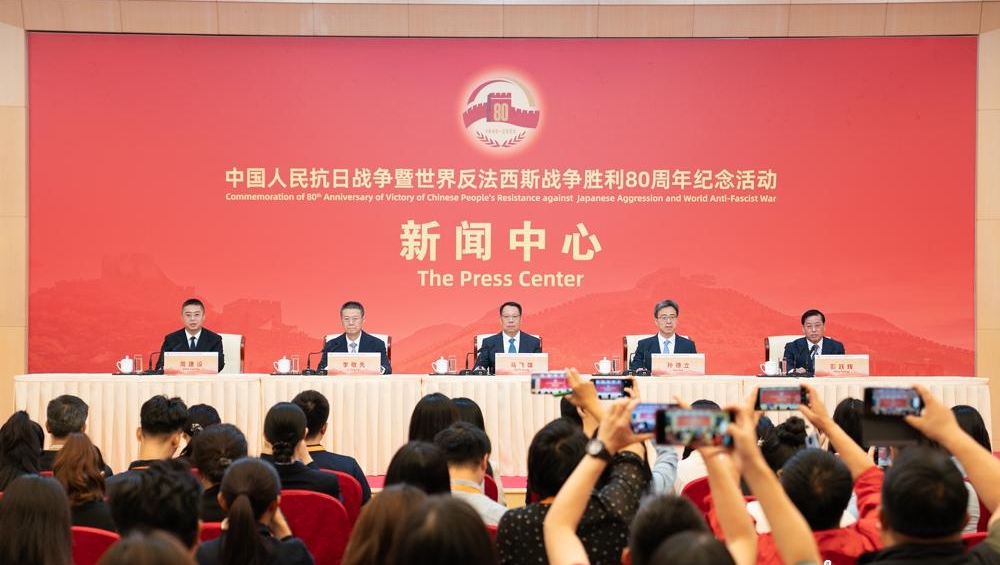China Culture Daily:
Protection first is a principle for the relics work in the new era. Could you share the progress relating to the protection of wartime relics? Thank you.
Sun Deli:
Thank you for your question. I'd like to invite Mr. Peng to answer it.
Peng Yuehui:
As wartime relics are precious, non-renewable, and irreplaceable resources, their protection is our primary task. In recent years, we have followed the principles of cultural relics preservation and the requirements for heritage work in the new era, advancing both rescue and preventive measures, safeguarding both the core structures and surrounding areas, and ensuring both individual sites and clusters are well protected. Our goal is to preserve as much as possible while focusing on priorities. As this year marks a key milestone, heritage authorities have focused on six major tasks, upholding three principles and strengthening efforts in three aspects.
First is to serve the overall situation. We have carried out preservation and exhibition initiatives for relics from the war to enhance both their protection and adaptive reuse. This includes supporting the renovation and expansion of the Museum of the War of Chinese People's Resistance Against Japanese Aggression, advancing the restoration of Lugou Bridge and a upgrade program for the historic Wanping City area, bringing new vitality to these iconic sites.
Second is to strengthen overall planning. We have guided the planning for the preservation and utilization of 20 cultural relic areas related to the war, defined spatial layouts and project designs, and implemented a batch of large-scale preservation and exhibition projects. Eleven provinces have launched 38 themed cultural tourism routes centered on these relics, strengthening systematic protection and contributing to the revitalization of old revolutionary base areas.
Third, we have adhered to demonstration and guidance. We have implemented conservation, display, and environmental improvement projects for the sites of resistance war against Japanese aggression represented by the former site of the Eighth Route Army Headquarters, the former site of the New Fourth Army Headquarters, the site of the Battle of Pingxingguan, the site of the Battle of Taierzhuang, the site of the Battle of Xuefeng Mountain in Western Hunan, the Ranzhuang Tunnel Warfare Site, the site of Crime Evidences of the Japanese Invaders in Huainan, and the former site of Weihsien Concentration Camp, promoting the integrated protection of cultural relics, historic landscape, and environment.
Fourth, we have deepened archaeological investigation. New breakthroughs have been made in the archaeological excavation of the Anti-Japanese Base at the Hongshilazi Site in Panshi, Jilin province and the site of Northeast Anti-Japanese United Army Secret Camp at Jiguan Mountain in Mulan, Heilongjiang province, with more than 4,000 Northeast Anti-Japanese United Army sites discovered and nearly 5,000 relevant cultural relics unearthed. Yesterday morning, a special exhibition of unearthed cultural relics from the Northeast Anti-Japanese United Army sites opened at the Museum of the Communist Party of China. We have jointly implemented a three-year action plan for the protection and utilization of revolutionary cultural relics of the Northeast Anti-Japanese United Army and advanced the development of the Hongshilazi Site Park.
Fifth, we have deepened collaborative research. We have jointly established six national collaborative research centers for revolutionary cultural relics related to the war of resistance against Japanese aggression. We have carried out the rescue, collection, and research of physical objects, documents, and historical materials related to the war of resistance, We have strengthened the protection and utilization of sites and evidence reflecting the atrocities and crimes committed by the Japanese invading troops, and carried out joint research on the protection of the remains of victims and the display of the mass grave sites.
Sixth, we have enhanced local innovations. Provincial regions including Heilongjiang, Guangxi, Yunnan and Shaanxi have introduced seven local regulations on the protection of cultural relics related to the resistance war. Shaanxi and Shanxi provinces have rolled out several fiscal measures to support the protection and utilization of revolutionary cultural relics and taken solid steps to advance the construction of themed zones in the Shaanxi-Gansu-Ningxia, Shanxi-Hebei-Henan, Shanxi-Chahar-Hebei, and Shanxi-Suiyuan anti-Japanese base areas. Thank you.


 Share:
Share: 




 京公網(wǎng)安備 11010802027341號
京公網(wǎng)安備 11010802027341號